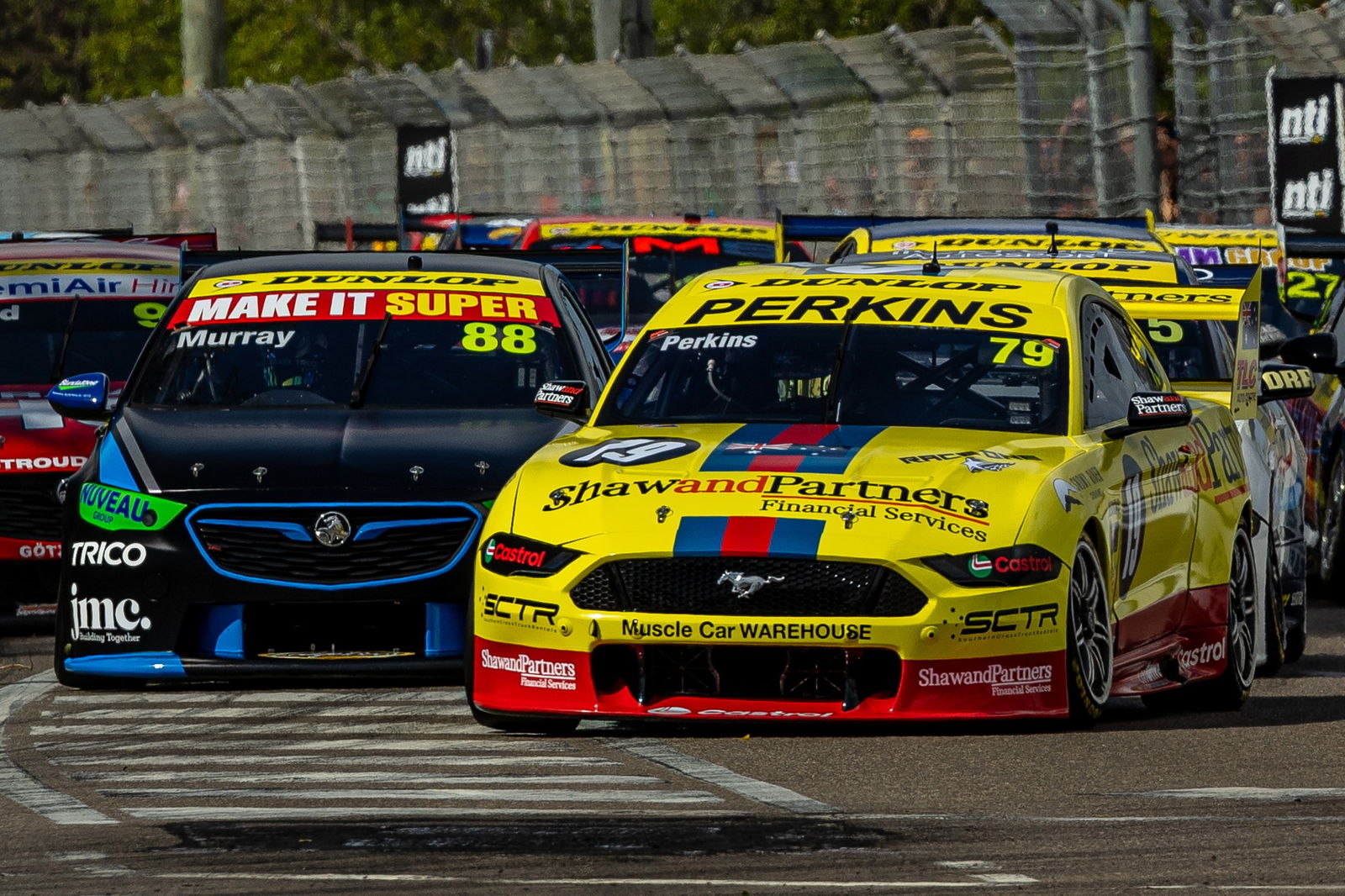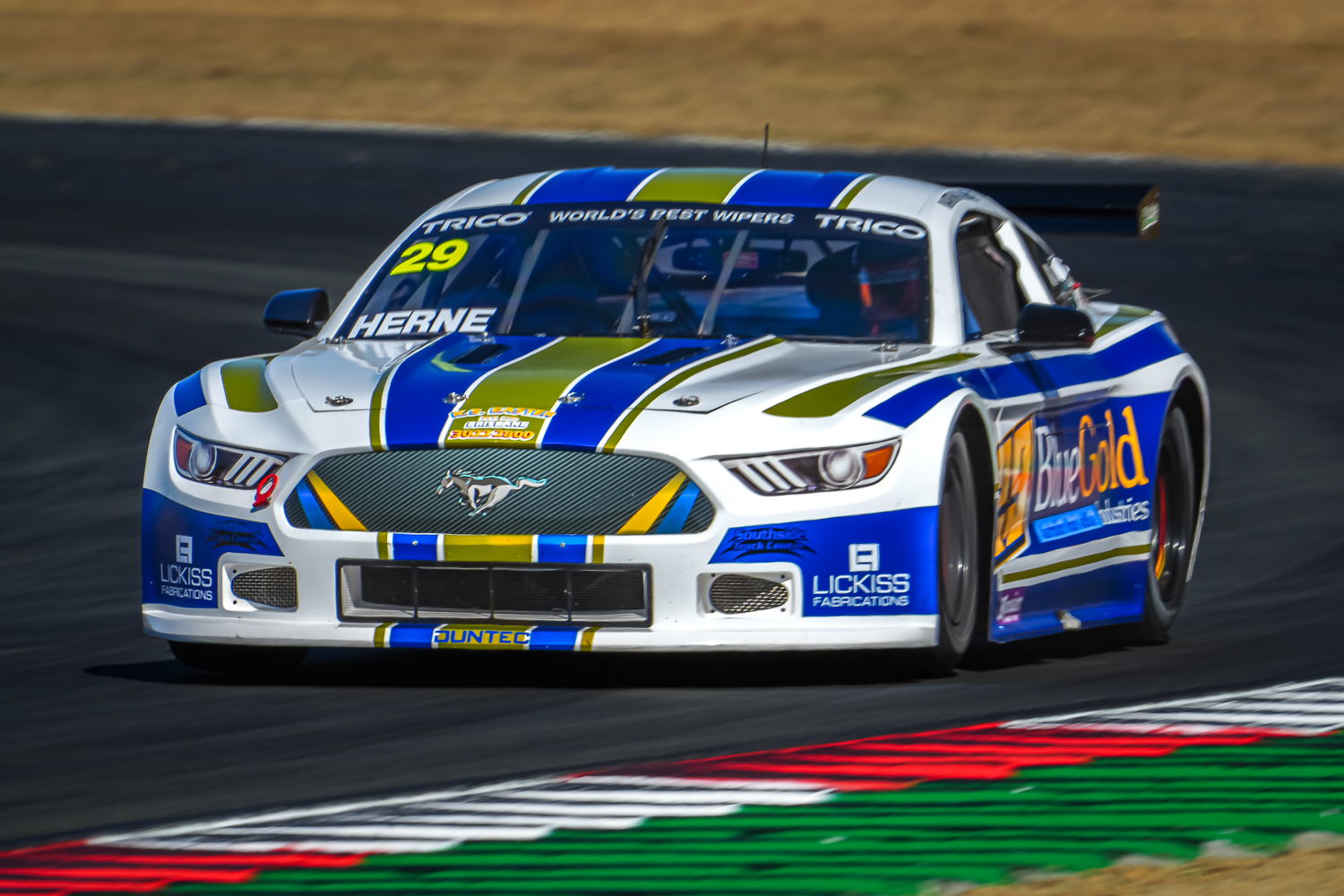

Super2 was conceived back at the turn of the century – under the mantle of The Konica V8 Lites Series – as a way of creating a market for used Supercars as well as providing a training ground for drivers, engineers, and mechanics as they progress towards the ultimate goal of competing in the main Supercars series.
It’s fair to say that the element of providing a ready-made marketplace for secondhand cars and parts was the biggest part of the motivation for this secondary category under the Supercars umbrella, especially given that the Supercar teams owned the majority of that umbrella in those days.
Now, 25 years later, is it time for a new approach? And could Supercars align it’s offering with the NASCAR one?
The Gen3 car is a very different beast from its predecessor. It’s also more expensive, as anything is these days whether we like it or not. Hence there’s pushback from Super2 teams to change over to Gen3 any time soon.
Let’s grasp the nettle. Should Super2 actually be heading towards running a derivative of a Trans Am (TA2) car? I say derivative as there are a few fairly big flaws with the existing cars in Australia that could, and should, be put right first.
For instance, there’s clearly a gearbox issue, as recent news has highlighted. There are others too, but all fixable for not too much money. These cars wouldn’t be expected to cover anything like the overall mileages of a main series Supercar, nor have long race distances, refueling etc, so the longevity expected of a Supercar wouldn’t be essential.
The advantages would be that the cost of entry into Super2 for non-Supercar teams would be reduced, the running costs would be reduced as well and therefore drivers (who fund the category) could get more events and more racing for their dollars.
The principles of learning how to drive, and how to run, a big, heavy, powerful rear wheel drive car would still apply, as would the ability to learn circuits along the way. But the cars would be distinctly different to look at from a Gen3 Supercar, which would still represent the pinnacle of the sport in Australia and show proper manufacturer tie-in.
The fans would see something very much akin to an Xfinity car as opposed to a NASCAR Cup Series car. Instead of only supporting Supercars at six events per season, as has become customary, there’d be the scope to roll out at more.

For instance, given a 12-round – God forbid – Supercars series, the new-fangled Super2 should roll out at nine of those. You’d exclude the AGP, Taupo and the Gold Coast. The AGPC wouldn’t want them, Taupo would be logistically too expensive, and the Gold Coast would end up with too many wrecked cars.
I suspect that doing nine events would appeal to many up-and-coming drivers and teams. Moreover, there’d be a number of drivers who’d dip in and out and not do the whole season. Despite that, it’s easy to see 30 cars grids out there. In fact, organisers would have to be tough on standards to ensure that the crash fest that is sometimes Super2 today doesn’t get worse.
This approach would also mean that there would be more of a level playing field for both non-Supercar teams as well as non-aligned teams in Super2. There’d be nothing stopping a Supercars team from competing of course, and they’d probably do a better job than most, but they wouldn’t have an automatic leg up. So, Super2 has a new look. Now for the next step.
Luke Sieders and his gang have done a ripper job of revitalizing the SuperUtes category. The series is going from strength to strength, looking from the outside in. Is it time for this to replace Super3?
The existing Super2 and Super3 cars can go and compete in V8 touring cars at club level all day long, and that would probably revitalize that category.
SuperUtes becomes the equivalent of the NASCAR Truck Series on the Supercars racecard, as is already happening this year by default. If it can grow by a round or two, that would be great to see. The point is that the increasingly poorly supported Super3 category falls away with SuperUtes actively promoted as a potential pathway to Supercars in its place.
Not every driver would want to take all the individual steps towards the main Supercars series, but you’d have Toyota 86, SuperUtes, and then Super2 available at (hopefully) a wide range of distinct price points.

All this leaves one great big dilemma to resolve though — and that’s the question of how Supercar teams dispose of their Gen3 cars going forward.
There’s two ways main series Supercars have traditionally been sold as a rule. Firstly, there are the championship and/or Bathurst winners. They’re straight collectable cars, full stop.
They’ll normally be taken out of service in the aftermath of the wins and be parked. The market will determine what each one of these is worth of course, but in my experience, and I’ve got a bit, they make good money, certainly more than something being down sold for Super2 use. That’s the easy part.
The second way is the Super2 route, whether that’s a main series team utilizing their own second-hand car in Super2 or selling it to a third-party team to run in the junior category.
But, more than ever before, a Gen3 car is an amalgamation of parts (all control) rather than a race car. The centre section of the chassis is cheap and readily available, for
instance.
When I saw Triple Eight replacing the centre section of the Cooper Murray-driven wildcard car in Darwin, it set me thinking. There’s more labour involved of course, but that chassis cost isn’t much different to a transaxle. It’s just another component.
Back in the Project Blueprint days, a chassis would owe us $200k at the time! Say, $300k today easily. So, for Supercar teams, why replace the cars? Replace components, including chassis plus front and rear clips when you want, but a car will be like Grandpa’s axe. Plenty of parts will transfer over.
In fact, the only major issue that I’d have is the integrity of wiring looms as they get older. But they can also be replaced. Or ensure that the supplier has a full, off-car, test jig to hand for teams to use when they give cars a birthday.
By value, a huge amount of the parts in a car can be serviced and transferred over into a new chassis when required. Old chassis would be scrapped or repaired for future use at the team’s discretion.
If a team chose to take a different route, I’d suggest that there’s a secondary market these days for an approved track day variant for customers. Work out an acceptable way of “knobbling” the cars somewhat (reduced horsepower, for instance, through a replacement ECU) and then there’s a potential market for punters to buy a track day car for, let’s say, $400k.
I reckon that these ideas are going to ruffle some feathers and smooth other ones. I’m trying to promote a different line of thinking here and maybe there are different ideas out there. I should also say that, despite the opinion of some others, I certainly don’t see TransAm as a replacement for Gen3 at the main series level.
The above plan would actually help protect the uniqueness and integrity of the Gen3 Supercar as the pinnacle of the sport locally.





















Discussion about this post